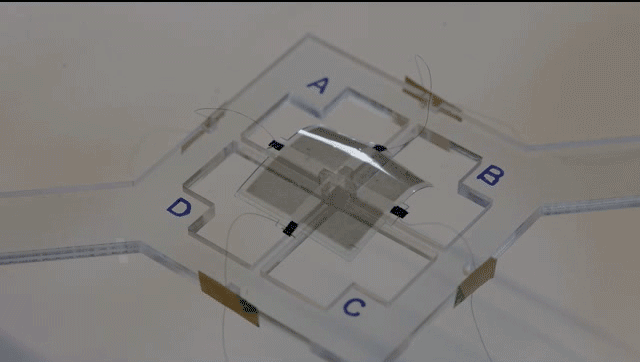Soft robots do a lot of things well but they’re not exactly known for their speed. The artificial muscles that move soft robots, called actuators, tend to rely on hydraulics or pneumatics, which are slow to respond and difficult to store.
Dielectric elastomers, soft materials that have good insulating properties, could offer an alternative to pneumatic actuators but they currently require complex and inefficient circuitry to deliver high voltage as well as rigid components to maintain their form— both of which defeat the purpose of a soft robot.
Ref: Multilayer Dielectric Elastomers for Fast, Programmable Actuation without Prestretch. Advanced Materials (4 July 2016) | DOI: 10.1002/adma.201601842
ABSTRACT
A novel method for fabrication of dielectric elastomer actuators (DEAs) combines acrylic polymers and single wall carbon nanotube network electrodes. DEAs made using this technique do not require prestretching, have extremely thin electrodes, and can be actuated at low voltage. The method is applied to create a multimorph device with nine actuation modes based on just four inputs.
